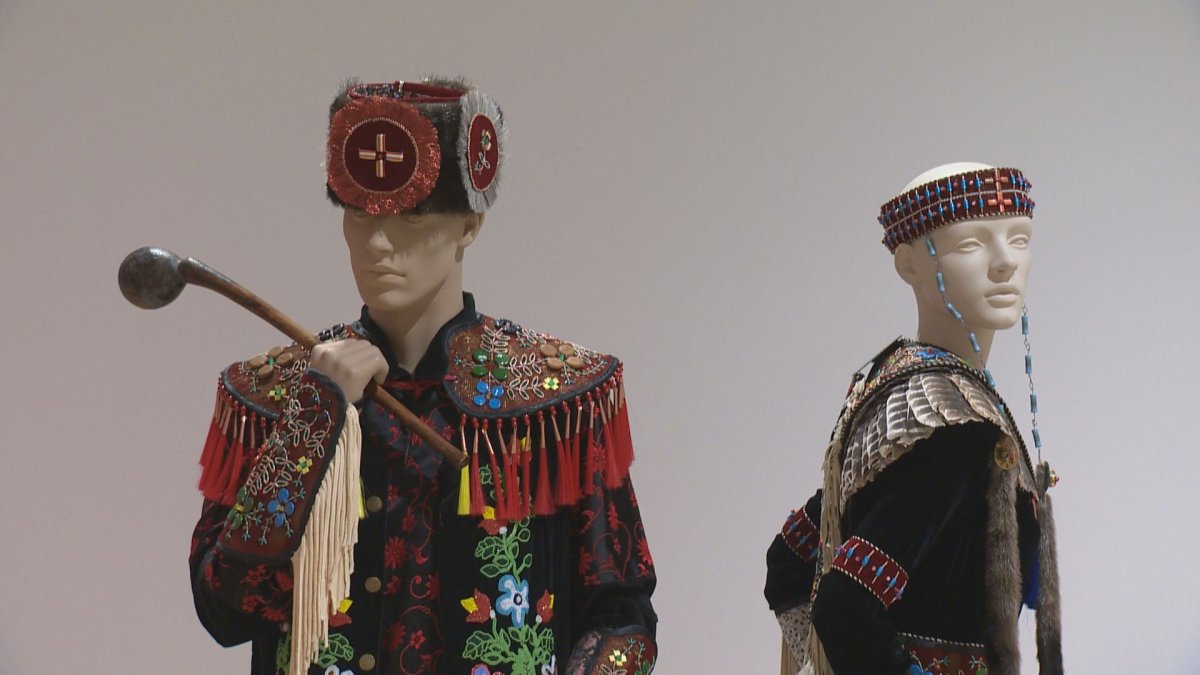Radical Stitch, a contemporary beadwork exhibition, is currently on display at the MacKenzie Art Gallery in Regina. Curators describe it as “A feast for one’s eyes.”

The exhibition features the work of 48 Indigenous artists from all over North America. There are more than 110 art pieces created with beads or that reflect the importance of beads to Indigenous people.
“It’s a radical act to be Indigenous in this moment, to express our Indigenous selves in really culturally grounded ways that certainly have been under attack,” said Cathy Mattes, guest curator of the exhibit.
“So to be a bead artist in this moment in time, it’s a radical act as Indigenous people and coming from cultures where colonial governments attempted to halt this practice, because in so many ways it was our strength. Radical Stitch recognizes it’s a radical act.”
She talked about the impact of colonization on customary practices and how despite all of that, they went forth with beading.
“We stand on the shoulders of ancestors who despite what was happening in their moments of time, they continued to bead for whatever their reasons were and that has provided us such strength.”
Some of the artwork on display includes a pair of stiletto boots and heels that are completely beaded by artists, contemporary beadwork like SpongeBob SquarePants, lightboxes and pixelated beads, and artworks that represent the everyday Indigenous knowledge through beads.
“Criteria for the exhibition really was technical excellence and our goal is to challenge both beadwork artists, but also audiences to see the unlimited potential of beads and to really understand the time, the many, many hours that goes into creating anything with beads,” co-curator Michelle Lavallee said. “Each of these things are stitched on usually one at a time so I think it’s quite exciting.”
There are pieces covered in beadwork from head to toe.

“It really speaks to the way that beadwork is valued and just really celebrated and worn and pursued,” Mattes said. “For me, that work speaks to the impact of imposing colonial legislation, rules and attitudes towards Indigenous people that come from our engagement with a colonial government.
“Despite imposed regulations and it being against the law to create regalia with beads on it, for me, those works represent and embody the resilience of Indigenous people and how beads play an important role in that resilience and challenges.”
Mattes added that it takes incredible patience and a real understanding of material, a willingness to experiment. Artist Will Wilson said it took 1,000 hours to create his piece in the exhibition.
Lavallee said Radical Stitch celebrates innovation and the tactile beauty of beads and that putting up the exhibition had its challenges. Pandemic delays caused issues with critical research to find and meet artists and they weren’t able to secure all the works they were initially looking for.
“We have still managed to get a small balance of representation in terms of geography and diversity and regional styles. But this is just the tip of the iceberg of the types of beadwork that’s out there right now being worked on, and just the tip of the iceberg of artists, you know, contemporary artists who are working with beads,” Lavallee said.
Mattes said they took a multigenerational approach, so there are works installed at a height that children can engage with. They considered all age groups and people from all backgrounds to come and celebrate the importance of this art form.
The tradition of beading in Indigenous culture dates back thousands of years. The earliest beads were made of seeds and other materials until trade beads came into play. Historically, beadwork would mostly be done by women who would be making clothing or baby carriers. One of the curators described it as “wrapping their loved ones and beaded prayers and providing for their families and communities by creating items for sale.”
Some Indigenous people have been learning to bead as a way to connect culturally. Others are doing it as an act of resistance to colonial impositions or colonial policies and histories that disrupted this practice.






Comments